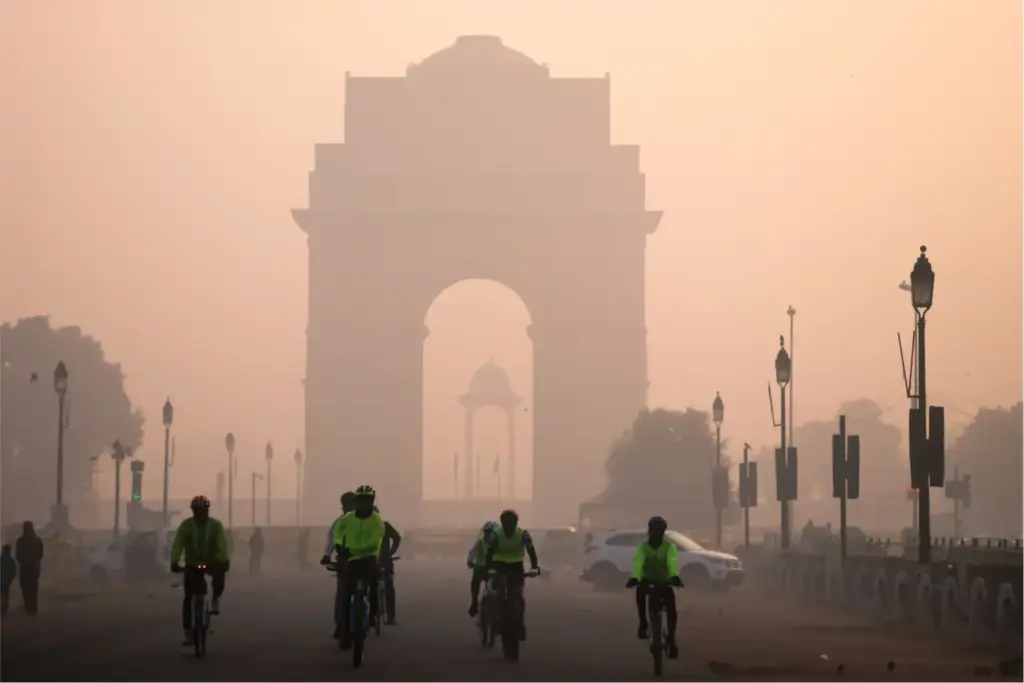
Delhi pollution: As the capital braces for winter and another smog season, a year-long study has flagged alarming indoor air contamination across dense North Delhi neighbourhoods, finding fungal spores up to 12 times and bacteria up to 10 times above World Health Organization (WHO) reference levels.
The research, by Delhi University’s Satyawati College, Jamia Millia Islamia, and South Dakota State University, published in Frontiers in Public Health (2025), sampled air from 336 homes in slum clusters of Ashok Vihar and Azadpur. Fungal concentrations ranged 1,330–6,050 CFU/m³ (WHO reference 500 CFU/m³), while bacterial loads were 730–5,300 CFU/m³ (WHO 500 CFU/m³).
Also Read | Is your home hurting your lungs? The hidden dangers of indoor air pollution
Most fungal particles were <2.5 microns, small enough to reach deep lung tissue. Seasonal patterns were pronounced: fungi climbed from winter, peaking in September–November (~6,050 CFU/m³), just ahead of Delhi’s smog, while bacteria rose through summer, peaking in August.
Health impacts were widespread among 509 residents surveyed: 33% reported frequent headaches, 23% burning/irritated eyes, 22% persistent cough or breathlessness, 18% sneezing/allergic rhinitis, and 15% skin irritation. Children and young adults were most affected (breathing difficulties or allergy symptoms in 28% of under-12s and 25% of those aged 18–30). Women accounted for nearly 60% of eye and skin complaints, likely due to longer indoor exposure.
Common airborne microbes included Aspergillus, Penicillium, Cladosporium, Staphylococcus, Streptococcus, and Micrococcus, with Aspergillus and Cladosporium dominant and known to trigger asthma, allergies, and chronic lung infections. Researchers warned that certain species can produce mycotoxins linked to headaches, fatigue, and immune suppression, and that chronic inhalation of fine fungal particles may cause hypersensitivity pneumonitis, often mistaken for asthma or bronchitis.
The study ties microbial surges to humidity (>60–70%), poor ventilation, damp walls, minimal sunlight, and infiltration of outdoor smog, making indoor air in many homes nearly as harmful as the air outside. Notably, symptoms were most frequent in winter and fall, suggesting prolonged exposure in closed, under-ventilated spaces worsens outcomes.
Calling indoor air quality a neglected policy area, the authors urged national indoor air standards, better ventilation and moisture control in low-income, high-density housing, risk-based inspections, and targeted public-health messaging before the smog season.








